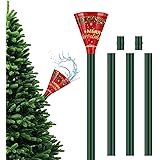Looking to grow your own red gold mine saffron? Look no further! In this blog article, we’ve got the perfect solution for you. Saffron, often referred to as the “red gold,” is known for its exquisite flavor, vibrant color, and numerous health benefits. Imagine having your own saffron farm, where you can harvest this precious spice right from your backyard.
It may sound like a dream, but it’s entirely possible with the right knowledge and techniques. Let’s dive into the wonderful world of growing saffron and discover how you can create your very own red gold mine.
Unlock The Secrets To Growing Your Own Red Gold Mine Saffron
The Fascinating World of Saffron
Saffron, also known as the “red gold,” is a highly prized spice derived from the Crocus sativus flower. Its vibrant crimson threads are renowned for their exquisite flavor, aroma, and vibrant color. Cultivating saffron is a labor-intensive process but can be immensely rewarding for those who embark on this journey.
In this article, we will explore the art of growing your own saffron and uncover the secrets to a successful harvest.
Choosing the Right Saffron Bulbs
When it comes to growing saffron, selecting high-quality bulbs is crucial.
Here are a few key factors to consider when choosing your saffron bulbs:
- Source:
Look for reputable suppliers or nurseries that specialize in saffron bulbs. Ensure that the bulbs are fresh and healthy.
- Size:
Opt for larger bulbs, as they tend to produce better yields.
- Grade:
Saffron bulbs are graded based on their size and vigor. Grade 1 bulbs are the largest and most robust, while grade 3 bulbs are smaller and less vigorous.
- Organic Options:
Consider purchasing organic saffron bulbs if you prefer to grow your saffron using organic methods.
Preparing the Soil
To ensure optimal growth and development of your saffron plants, it’s essential to prepare the soil properly. Here’s how you can do it:
- Soil Type:
Saffron thrives in well-draining soil with a pH level between 6 and 8. If your soil is heavy or clayey, consider adding organic matter, such as compost, to improve drainage.
- Soil Preparation:
Clear the planting area of any weeds, rocks, or debris. Loosen the soil to a depth of at least 8 inches, ensuring that it is light and friable.
- Fertilization:
Before planting, incorporate a balanced organic fertilizer into the soil to provide essential nutrients for the saffron plants.
Read More: About How Often To Fertilize Aquarium Plants?
Planting and Cultivating Saffron
Once you have prepared the soil, it’s time to plant your saffron bulbs and nurture them as they grow. Here’s a step-by-step guide:
- Timing:
Saffron bulbs are typically planted in late summer or early autumn, allowing them to establish their root system before the blooming season in spring.
- Planting Depth:
Dig small holes or trenches that are approximately 4-6 inches deep. Place the saffron bulbs in the holes with the pointed ends facing upwards, ensuring a spacing of 4-6 inches between each bulb.
- Protection:
Cover the bulbs with soil and gently firm it around them. Mulch the planting area with straw or leaves to protect the bulbs from extreme temperatures and conserve moisture.
- Watering:
Saffron bulbs require adequate moisture to initiate growth. Water the planting area thoroughly after planting and maintain consistent moisture levels, avoiding overwatering.
- Light and Temperature:
Saffron plants thrive in full sunlight, so ensure they receive at least 6-8 hours of direct sunlight each day. They prefer a cool climate and can tolerate temperatures ranging from 50°F to 85°F (10°C to 29°C).
- Weed Control:
Regularly remove weeds around the saffron plants to prevent competition for nutrients and reduce the risk of diseases.
Harvesting and Storing Saffron
After patiently nurturing your saffron plants, the moment arrives to harvest the precious threads. Follow these steps for a successful saffron harvest:
- Timing:
Saffron threads are harvested from the flowers of the Crocus sativus plant. Harvesting usually takes place in the early morning when the flowers are fully open.
- Flower Extraction:
Gently pluck the flowers from the saffron plants, being careful not to damage the delicate threads within.
- Separating the Threads:
With great care, separate the crimson threads from the flowers. Each flower typically produces three threads, and it can take over 75,000 flowers to yield just one pound of saffron.
- Drying:
Lay the threads in a single layer on a dry paper towel or a mesh screen. Place them in a well-ventilated area away from direct sunlight and allow them to dry completely. This process can take anywhere from a few days to several weeks.
- Storage:
Once dry, store the saffron threads in an airtight container, preferably in a cool, dark place. Properly stored saffron can retain its flavor and aroma for up to two years.
Benefits and Uses of Saffron
Saffron offers more than just a delightful flavor and vibrant hue. Here are some of the benefits and uses of saffron:
- Culinary Delights:
Saffron is a staple ingredient in various cuisines around the world, adding a distinct taste and a touch of luxury to dishes.
- Medicinal Properties:
Saffron has been used for centuries in traditional medicine for its potential health benefits, such as promoting digestion, reducing inflammation, and improving mood.
- Coloring Agent:
Saffron’s intense orange-red color makes it a valuable natural dye for textiles and food products.
- Aromatherapy:
Saffron’s unique fragrance is often used in perfumes and aromatherapy blends, known for its calming and soothing properties.
Growing your own saffron can be a delightful and rewarding experience. By carefully selecting high-quality bulbs, preparing the soil, and providing proper care, you can cultivate your very own red gold mine. From planting to harvest, the journey of nurturing and harvesting saffron is a labor of love that yields a spice of exceptional quality and value.
Remember, patience is key when it comes to saffron cultivation. With time and dedication, you can unlock the secrets of this exceptional spice and savor the flavors of your own homegrown saffron. So, embark on the adventure of growing your own red gold mine and immerse yourself in the captivating world of saffron.
Read More: About Do Cacti Produce Oxygen?
Frequently Asked Questions (FAQs)
Saffron can be grown by planting saffron corms in well-draining soil, preferably in a sunny spot in your garden or in pots. It requires a dry and warm climate with a cool winter. Regular watering, good soil preparation, and protection from extreme temperatures are important for successful saffron cultivation.
Saffron corms should be planted in late summer or early autumn, around 6-8 weeks before the first frost. This allows the bulbs to establish their roots before the winter months and ensures they are ready to bloom in the spring.
Saffron corms should be planted around 3-4 inches deep in the soil. It is important to ensure that the pointed end of the corm faces upwards while planting. This depth provides the necessary soil coverage and protection for the corms.
Saffron prefers well-draining soil with a pH level between 6 and 8. Sandy or loamy soil types are ideal for saffron cultivation. Amending the soil with organic matter like compost can improve its fertility and drainage.
Saffron plants require regular watering, especially during the growing season. It is important to keep the soil moist but not waterlogged. Aim to water saffron plants once or twice a week, depending on the weather conditions and soil moisture levels.
Saffron plants require some special care to thrive. Apart from regular watering, it is important to protect them from extreme temperatures, both hot and cold. Mulching the soil around the plants can help in maintaining a cool soil temperature. Regularly removing weeds and providing adequate sunlight are also important for successful saffron cultivation.
Saffron plants typically start blooming in the fall, about 6-8 weeks after planting the corms. Each flower blooms for only a short period of time, usually around 1-2 days. It is important to harvest the delicate saffron threads from the flowers as soon as they bloom to maximize flavor and potency.
Yes, saffron can be successfully grown in pots or containers. It is important to choose a container with good drainage and sufficient depth for the corms to establish their roots. The same principles of soil preparation, watering, and care apply to saffron cultivation in pots as well. Regularly repotting the corms every 2-3 years can help ensure healthy growth.
Saffron threads are harvested by carefully plucking the stigmas from the flowers. This is usually done early in the morning when the flowers have just bloomed. The harvested threads should be dried completely and stored in an airtight container away from light and moisture. Properly stored saffron can retain its flavor and quality for up to two years.
Final Thoughts
Growing your own red gold mine saffron is a rewarding endeavor that allows you to enjoy the rich flavors and vibrant colors of this highly prized spice. With careful attention to detail and a little patience, you can produce your own high-quality saffron right in your garden.
By following the steps outlined in this article, you can successfully cultivate and harvest saffron threads that are as valuable as those found in the finest gourmet stores. So, why wait? Start growing your own red gold mine saffron and savor the delights it brings to your culinary creations and senses.
Auto Amazon Links: No products found.
Perfect Plants Christmas Tree Saver 8oz. | Easy Use Xmas Tree Preserver Food | Have Healthy Green Christmas Trees All Holiday Season
$9.97 (as of December 3, 2025 00:36 GMT +00:00 - More info- Product prices and availability are accurate as of the date/time indicated and are subject to change. Any price and availability information displayed on [relevant Amazon Site(s), as applicable] at the time of purchase will apply to the purchase of this product.
Kaiedos Christmas Tree Watering Funnel - 39 Inch Funnel, Reusable Design, Makes Watering Your Live Tree a Snap!
$14.99 (as of December 3, 2025 00:36 GMT +00:00 - More info- Product prices and availability are accurate as of the date/time indicated and are subject to change. Any price and availability information displayed on [relevant Amazon Site(s), as applicable] at the time of purchase will apply to the purchase of this product.
Christmas Tree Watering Funnel, Real Christmas Tree Water Long Funnel About 40 Inch, Trees Watering System for Water Indoor Outdoor
$15.99 (as of December 3, 2025 00:36 GMT +00:00 - More info- Product prices and availability are accurate as of the date/time indicated and are subject to change. Any price and availability information displayed on [relevant Amazon Site(s), as applicable] at the time of purchase will apply to the purchase of this product.
IPOOLTENG Christmas Tree Watering Funnel 3 Tube 1 Funnels 40 Inch - 3 Section Plastic Christmas Tree Funnel Waterer, Long Funnels for Watering Trees, Best Gifts for Your Parents to Water Tree
$15.53 (as of December 3, 2025 00:36 GMT +00:00 - More info- Product prices and availability are accurate as of the date/time indicated and are subject to change. Any price and availability information displayed on [relevant Amazon Site(s), as applicable] at the time of purchase will apply to the purchase of this product.
1 Pack Christmas Tree Watering Funnel System, 44 Inch Christmas Tree Watering Stick with Adjustable 3-Section Design, Reusable & Spill-Free, Xmas Plant Waterer Tool for Indoor and Outdoor
$16.99 (as of December 3, 2025 00:36 GMT +00:00 - More info- Product prices and availability are accurate as of the date/time indicated and are subject to change. Any price and availability information displayed on [relevant Amazon Site(s), as applicable] at the time of purchase will apply to the purchase of this product.
Cuisinart 6.5" Cast Iron Smashed Burger Press, Round Flat Edge Grill Press for Crispy Smash Burgers, Burger Tool for Grill and Griddle Accessories, for BBQs and Tailgates
$24.99 (as of December 3, 2025 16:48 GMT +00:00 - More info- Product prices and availability are accurate as of the date/time indicated and are subject to change. Any price and availability information displayed on [relevant Amazon Site(s), as applicable] at the time of purchase will apply to the purchase of this product.
Muddy Mat® Shown on TV Super Absorbent Microfiber Dog Door Mat for Muddy Paws, Non-Slip Washable Pet Rug, Quick Dry Chenille Entryway Carpet, Machine Washable Indoor Outdoor mat, Grey 30"x19"
$19.95 (as of December 3, 2025 16:48 GMT +00:00 - More info- Product prices and availability are accurate as of the date/time indicated and are subject to change. Any price and availability information displayed on [relevant Amazon Site(s), as applicable] at the time of purchase will apply to the purchase of this product.
Snow Joe Premium Enviro Blend Ice Melt, Green-Coated Deicer Crystals, 50 lb - Safer Melter for Vegetation, Concrete & Metals w/ Anti-Corrosion Calcium Magnesium Acetate
$32.97 (as of December 3, 2025 16:48 GMT +00:00 - More info- Product prices and availability are accurate as of the date/time indicated and are subject to change. Any price and availability information displayed on [relevant Amazon Site(s), as applicable] at the time of purchase will apply to the purchase of this product.
OLANLY Dog Door Mat for Muddy Paws 30x20, Absorbs Moisture and Dirt, Absorbent Non-Slip Washable Doormat, Quick Dry Chenille Mud Mat for Dogs, Entry Indoor Entryway Carpet for Inside Floor, Grey
$9.99 (as of December 3, 2025 16:48 GMT +00:00 - More info- Product prices and availability are accurate as of the date/time indicated and are subject to change. Any price and availability information displayed on [relevant Amazon Site(s), as applicable] at the time of purchase will apply to the purchase of this product.
Zevo Flying Insect Trap Official Refill Cartridges - Fits Both Zevo Trap & MAX Indoor Fly Trap - Authentic Trap+Lock Technology to Catch Gnats, House & Fruit Flys (4 Official Refill Cartridges)
$14.97 (as of December 3, 2025 16:48 GMT +00:00 - More info- Product prices and availability are accurate as of the date/time indicated and are subject to change. Any price and availability information displayed on [relevant Amazon Site(s), as applicable] at the time of purchase will apply to the purchase of this product.











